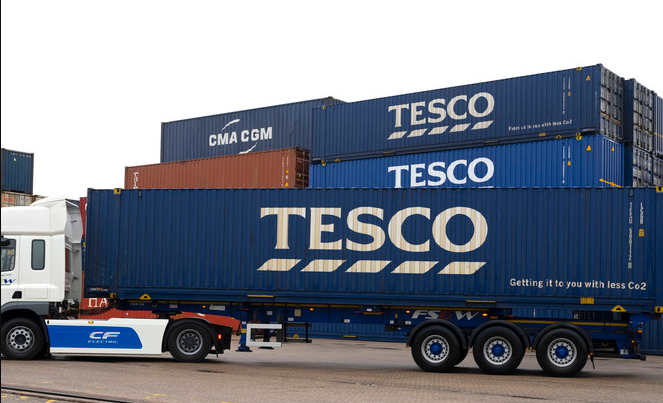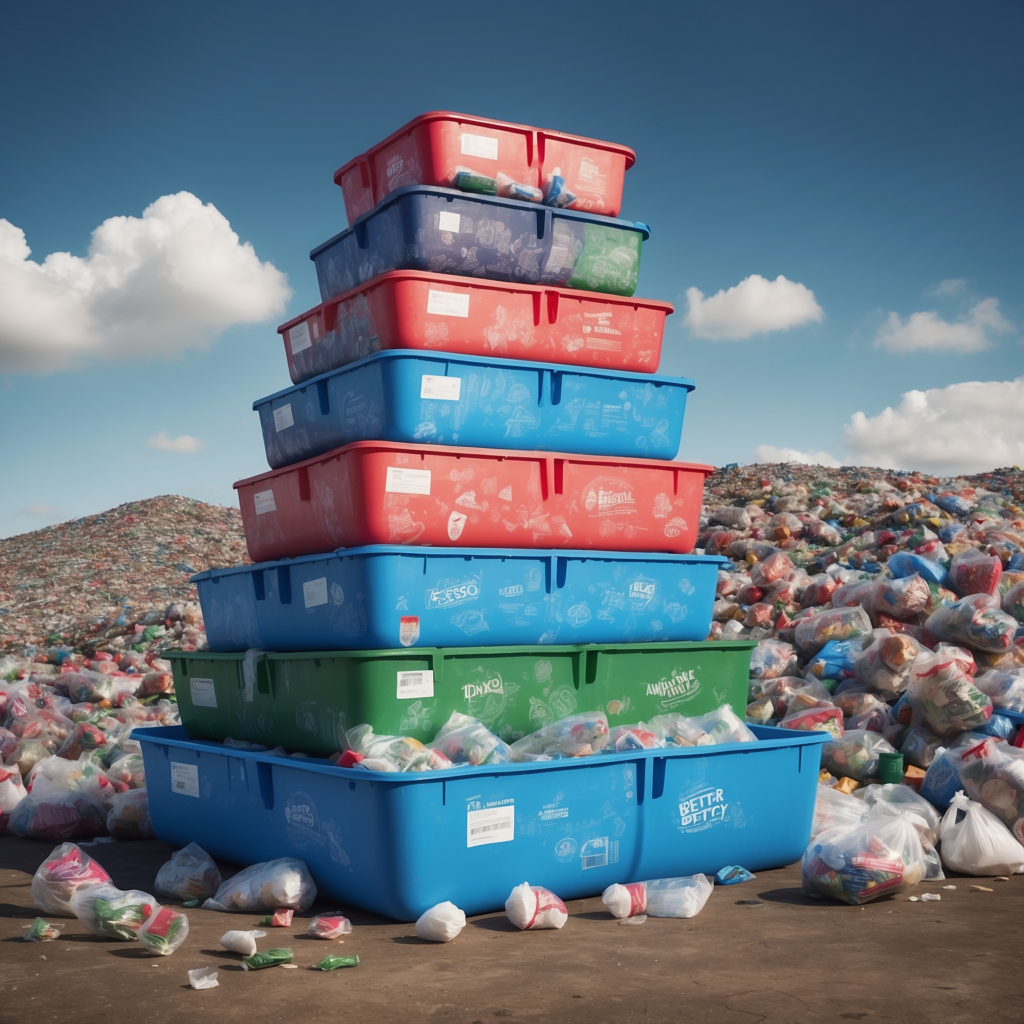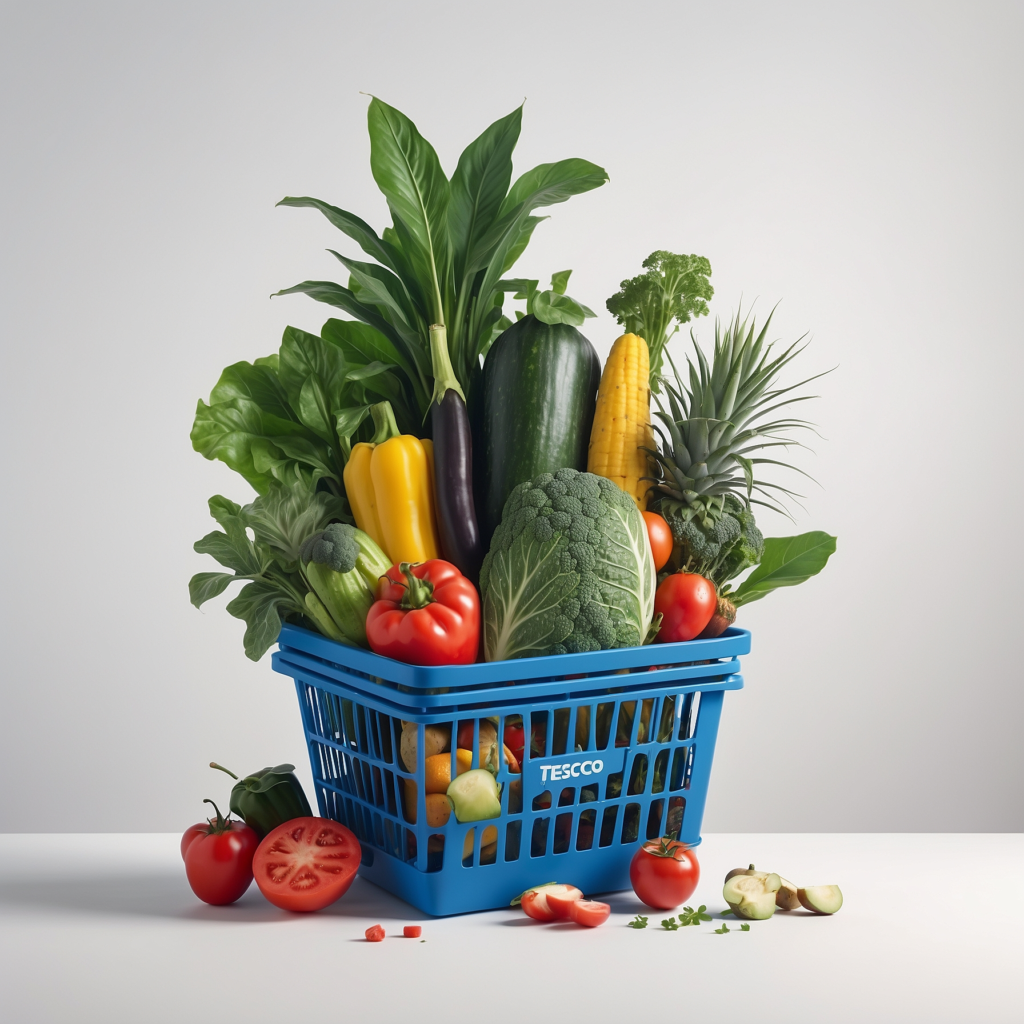Running a business isn’t easy, right? Now imagine trying to run a massive supply chain, like Tesco, where you’re dealing with everything from fresh veggies to keeping shelves stocked during the Holidays. It’s a lot to juggle!
Tesco’s had its fair share of challenges, from figuring out how to go green without breaking the bank to handling labor shortages and changing customer habits.

But here’s the thing—small business owners can actually learn a lot from Tesco’s struggles and solutions. You don’t need a massive budget or fancy robots to make your supply chain more efficient, sustainable, or flexible.
Whether it’s cutting down on waste, automating small tasks, or simply keeping up with customer demands (like offering online shopping), Tesco’s approach can be a great guide for smaller businesses.
You know, these days, you can’t just sell groceries and call it a day—no, now you’ve got to save the planet too! As one of the UK’s biggest retailers, Tesco has been feeling the heat from eco-conscious customers and regulators who want to ensure their grocery runs aren’t melting the ice caps.
The vast supply chain—comprising farms, factories, transportation networks, and retail stores—produces a significant amount of carbon emissions. These emissions arise from the transportation of goods across long distances, energy consumption in warehouses and retail outlets, and emissions generated by suppliers.

And let’s not forget about road transportation—Tesco’s got trucks on trucks. So while they’re zipping around delivering your favorite snacks, they’re also adding to their carbon tab.
Plus, Tesco used to have a bit of a love affair with non-recyclable packaging. Yep, those plastic bags and packages that end up in landfills for centuries? Not great for Mother Earth.
Oh, and sourcing products from all over the world doesn’t make things easier. Many of Tesco’s suppliers are in places where “sustainability” is just a fancy word. Convincing everyone to cut back on water usage and stop chopping down forests has been a tall order.
But Tesco’s not sitting on its hands. They’ve been rolling out some eco-friendly changes, like figuring out how to reduce emissions and waste while still getting food on the shelves. It’s a balancing act—saving the planet without running out of tomatoes!
Commitment to Net-Zero Emissions by 2050
Tesco is on a mission to go green and has promised to hit net-zero carbon emissions by 2050. That’s right—no more carbon footprints the size of Bigfoot! This ambitious plan means they’ve got to cut emissions at every stage of their supply chain, from the farms to the checkout aisles.
And guess what? Tesco has already made some serious progress! They’ve managed to chop their Group Scope 1 and 2 emissions down by 52% since 2009. Talk about a glow-up! Plus, they’re shooting for carbon neutrality in their direct operations by 2035. That’s like saying, “We’re not just going to recycle; we’re going to take out the trash and compost too!”
Part of this green makeover includes splurging on renewable energy. Yep, they’re switching their stores and warehouses to solar, wind, and all those other clean energy sources that make Mother Nature smile.
But here’s the kicker: transportation is still a bit of a pickle for Tesco’s sustainability dreams. They’ve started using rail services to move goods around, and guess what? It cuts emissions by about 76% compared to those big ol’ trucks.
Even with that upgrade, there’s still work to be done to get those logistics emissions under control. So, while Tesco is on the right track (pun totally intended), they’ve still got a bit of a journey ahead!
Sustainable Packaging Initiatives: Saving the Planet, One Grocery Bag at a Time
Tesco is on a mission to ditch 1 billion pieces of plastic from its operations. That’s like saying goodbye to a billion annoying exes! They’re swapping out single-use plastics for recyclable or biodegradable options, making Mother Earth do a little happy dance.
This packaging makeover covers everything from fresh produce to saying “no thanks” to plastic bags and straws. Tesco is even buddying up with suppliers to make sure products arrive in more eco-friendly wrapping. Teamwork makes the dream work!
But hold on—despite these efforts, Tesco is still catching flak for its plastic habits. Environmental groups are like that friend who points out your flaws at every party, reminding Tesco that progress has been slower than a snail on vacation.
The company has set its sights on making all packaging recyclable or compostable by 2025, but it’s still wrestling with the mountain of plastic it uses.

Reducing Food Waste
Tesco became a leader in tackling food waste through partnerships with organizations like FareShare and OLIO. These initiatives allow Tesco to donate surplus food to charities and community groups, ensuring that edible food doesn’t end up in landfills.
In the fiscal year 2022/23, Tesco successfully redistributed 88% of unsold food safe for human consumption, surpassing its target of 85%. This approach not only reduces waste but also addresses food insecurity in communities.
Sustainable Sourcing and Ethical Supply Chains
So, here’s the scoop on Tesco and its mission to be the eco-friendly superhero of grocery shopping! They’re all about making sure their products are sourced sustainably—because who wants to feel guilty while munching on a snack, right?
Every year, Tesco sources around 796,000 tonnes of fresh produce from local farmers. That’s like a mountain of veggies! This not only cuts down on those pesky transportation emissions (goodbye, long-haul truck fumes) but also gives a boost to local economies.
This whole local sourcing strategy isn’t just about saving the planet; it also makes Tesco look pretty good in the eyes of consumers who are all about that environmentally responsible life. You know, it’s like being the cool kid in school because you recycle!
And hey, small businesses can totally take a page out of Tesco’s book here. By weaving sustainability into their supply chains, they can save the planet and win over customers without breaking the bank.
Start by tackling waste—whether that’s ditching excessive packaging or finding a way to use up those leftover materials lying around.
Plus, teaming up with local suppliers or charities to donate surplus goods is a win-win! You get to help out the community and keep those waste bins a little less full. So, let’s make the world a better place, one eco-friendly choice at a time!
Just like many big-name retailers, Tesco has been feeling the pinch of labor shortages, especially in its supply chain. It’s like trying to run a marathon with one shoe—things just don’t flow smoothly!
This was heightened by global factors such as the COVID-19 pandemic and Brexit, which further disrupted the availability of workers in critical areas.
Labor shortages put a strain on Tesco’s ability to maintain smooth operations and meet consumer demands, forcing the company to rethink its labor strategies. Let’s take a closer look at these labor-related challenges:
To address these labor challenges, Tesco implemented a series of strategies:
Automation and Robotics
They’ve rolled out some nifty robots in their warehouses to handle the boring stuff like stock management and product sorting—basically, the jobs that make humans say, “Ugh, do I have to?” This way, they can keep things running smoothly even when they’re short on staff.
For instance, Tesco teamed up with Swisslog (the tech whizzes behind Ocado) to set up a fancy automated pallet retrieval and storage system. Watch the video of how it works here: https://youtu.be/QONyKR0KdYs
The robots zoom around on conveyor belts like they’re in a high-speed race, picking up and dropping off products. It’s like a scene from a sci-fi movie but with fewer lasers!
This PowerStore system isn’t just for show; it cranks up storage capacity by a whopping 60% compared to the old-school racking methods. So, less manual labor and more time for the robots to do their thing.
Now, I know what you’re thinking: “But I’m just a small business!” Don’t worry; you don’t need a robot army to get in on the automation fun. Even simple tools like automated inventory systems or scheduling software can save you from drowning in paperwork and give you time to focus on the fun stuff.
The goal? Use tech to take care of those repetitive tasks—whether it’s cranking out invoices or having chatbots handle customer questions. Because let’s face it, nobody wants to be stuck doing the same boring task over and over!
Wage Increases and Improved Benefits
To keep their team happy and sticking around, Tesco decided to up the ante by boosting wages and rolling out some sweet benefits. Think flexible hours, better sick leave, and health perks that make employees feel like rock stars. It’s like Tesco said, “Hey, we want you to stick around, so here’s a little something to make it worth your while!”
This whole strategy not only helped fill those pesky vacancies but also made employees happier to stay put, which is great for cutting down on turnover and all those costs that come with constantly recruiting and training new staff.
And because they know frontline workers have been through the wringer during the pandemic, Tesco launched mental health support initiatives and well-being programs. Because sometimes you just need someone to say, “Hey, it’s okay to take a breather!”
Increased Reliance on Gig Workers and Temporary Staff
Tesco also leveraged the gig economy and temporary staffing solutions to address labor shortages during peak periods, such as the holiday season or during the pandemic’s height.
To counteract this, Tesco announced a campaign to recruit 30,000 temporary workers for the holiday season, doubling its previous target of 15,000. This recruitment drive aims to attract a diverse workforce, including students and individuals seeking additional income during the cost-of-living crisis
For small businesses, hiring temporary staff or leveraging gig workers can be a cost-effective solution for addressing labor shortages during peak periods.
You can also read on:
“Home Depot: From Supply Chain Chaos to Conquest – A Guide for Small Business Owners” – this shows you how Home Depot tackled its labor shortages while also optimizing warehouse operations, and improving last-mile delivery.
You know how it is—one minute everyone’s all about organic kale, and the next, they’re craving frozen pizza. Consumer preferences are always shifting! It’s like trying to keep up with the latest TikTok dance—constantly shifting and a bit overwhelming.
Tesco has had to roll with the punches, especially when it comes to the growing appetite for online shopping, organic goodies, and healthier munchies.
Shift Toward Online Shopping
The COVID-19 pandemic accelerated a shift towards convenience shopping. People have really embraced the couch potato lifestyle—who wants to put on pants when you can shop from your sofa?
So, home delivery and click-and-collect services are now all the rage. Tesco has seen its convenience stores (like Tesco Express) grow by 6.2% compared to previous years. Meanwhile, their larger stores are feeling a little blue with slight declines in sales.
Shoppers are making more trips but buying fewer items—like they’re on a grocery diet! To tackle the online shopping boom, Tesco has pumped some serious cash into its e-commerce setup.
They’ve beefed up delivery services, expanded click-and-collect options, and made their apps and websites user-friendly—because nobody wants to wrestle with a clunky website while trying to order snacks.
This investment paid off big time, with online sales jumping by 8.9% in the first quarter of 2024, thanks in part to their food delivery service, Whoosh. They also built more local fulfillment centers to speed up order processing and cut down on delivery times. Talk about a well-oiled machine!
For any business looking to expand online, taking notes from how Tesco balances physical stores with e-commerce could be a goldmine of wisdom.
Demand for Healthier Products
Health-conscious consumers are seeking products that promote wellness, such as organic, plant-based, and minimally processed foods.

The retailer’s data indicates that millions of customers are opting for healthier products, driven by initiatives such as the “Better Baskets” campaign, which encourages the purchase of items lower in fat, sugar, and salt (HFSS). This campaign has resulted in a significant increase in the volume of healthier items bought.
Tesco is actively reformulating products and removing unhealthy options from promotions to support this trend. The company aims to achieve 65% healthy sales by 2025, reflecting its commitment to promoting healthier lifestyles among consumers.
It has also responded by providing clear labeling that allows customers to make informed choices about the nutritional value of the products they buy.
Tesco’s implementation of effective supply chain strategies has provided the company with several significant competitive advantages including:
You can learn more about:
“Costco Competitive Advantages and Marketing Strategy” – This gives you an overview of Costco’s business model and competitive advantages and how the company uses a low-cost pricing strategy and membership-based model to increase its market share and profits.

Email subscription is available ONLY TODAY (oh, okay, and tomorrow).
Surely, we respect your inbox! Unsubscription works every day.

We’d love to tailor your experience — which of these best describes you?